11.1 The internet
|
Previous
Chapter 10: Types of networks: PAN/HAN
|
Next
Chapter 12: Internet communication
|
 CHAPTER OVERVIEW
CHAPTER OVERVIEW
 At the end of this chapter, you should be able to:
At the end of this chapter, you should be able to:
- Explain what the internet and world wide web (WWW) are.
- Understand the concepts used in the Web.
- Differentiate between a website and web page.
- Understand what a web address is and the different elements that it consists of.
- Identify the different types of websites.
- Use the web browser.
- Open, close and switch between tabs.
- Use a search engine to browse the internet.
- Understand what uploading and downloading are.
INTRODUCTION
The internet has become increasingly important in everyday life for people all over the world. It is the biggest network made up of billions of computers and other computing devices, such as smartphones, tablets, laptops, etc. The internet allows us to communicate with anyone across the world and access almost any type of information we need.
The biggest trend now, thanks to the internet, is social media. So, before you post anything new on Instagram, let’s learn more about the internet and social media.
Social media and other interactive, crowd-based communication platforms reached new heights at the beginning of the 21st century. This has resulted in people being more up to date both in terms of their own lives and in the lives of others.
In this chapter, we will look at what the internet and world wide web (WWW) are, the different types of websites, as well as browsers and how to do some basic browsing.
UNIT
11.1 The internet
The internet is a world-wide system of computer networks that are connected to each other. These networks connect with each other using cables, telephone lines and communication satellites.
When a computer is connected to the internet, it allows a person to access emails, music videos, pictures and any other relevant information. If a person is connected to the internet, this person is said to be working online.

WHAT IS THE INTERNET?
Watch the following interesting video to listen to what the co-inventor of the internet says:

INTERNET ADDRESS
Have you ever wondered about the fact that if there are 250 billion emails sent every day from our smartphones, PCs or laptops, how exactly do they go to the correct place? The answer is that every device connected to the internet receives a unique IP address. Whenever a message is sent over the internet, it is sent to a device’s IP address. An IP address consists of four sets of numbers, which are separated by dots, as shown below:
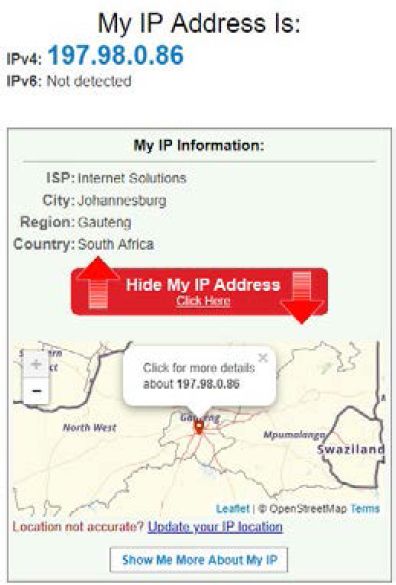
 Guided Activity 11.1
Guided Activity 11.1
1.To see what the IP address is of the computer you are currently working on, do the following:
a.Open a web browser. Ask your teacher to show you how to do it if you do not know.
b.Go to the Google search engine.
c.Type in “What’s my IP?” in the search box.
Your IP address will be displayed at the top of the search results.
As South Africa only has dynamic IP addresses, the IP address will change every time you connect to the internet.
UNIT
11.2 The world wide web
The world wide web (WWW) is a part of the internet where documents and other resources can be accessed. The WWW is often called “The Web”.
The internet and the WWW are often confused. The internet is, in fact, the biggest network in the world; while the WWW is a collection of documents and other resources that you can browse, or access, through the internet.
Most resources are websites that can consist of text, pictures, audio clips, video clips, animations, etc. After connecting to the internet, you can browse websites using a type of application called a web browser.
You will learn how to browse the internet, as well as how to navigate to the different websites using uniform resource locators (URLs) and tabbed browsing.
IMPORTANT CONCEPTS USED WITH THE WORLD WIDE WEB
There are some important concepts that you should learn in order to understand the Web better. Some of these concepts will be explained in more detail in the sections to follow.
A web server is a computer that hosts a website, for example if you want to access www.wikipedia.org, the web server receives this request and uses hypertext transfer protocol (HTTP) to format and then present the website to you.
A website is a collection of web pages, for example Wikipedia is a website that has billions of web pages about different topics and articles. A web page is a single page of hypertext mark-up language (HTML) text, which can display text, media, images, or interactive material, such as audio files.
HTML is a type of coding language used on web pages to display text, images and audiovisuals. Documents on the internet that are not encoded in HTML are not web pages.

Something to know
People get confused between a web server and a website, for example, if someone is saying “my website is not loading”, they actually mean that the web server is not responding, which then results in the website not loading.

HTML BASICS
Just to pique your interest, you can read a bit more about HTML basics by clicking on this QR code:

https://developer.mozilla.org/en-US/docs/Learn/Getting_started_with_the_web/HTML_basics
USING A WEB BROWSER
A web browser is a type of software that lets you browse websites or web pages. Every time you Google something, you are using a web browser to read what is on the web page. There are different types of web browsers, for example Google, Mozilla Firefox and Internet Explorer.
In Chapter 5, we looked at the basics of connecting to the internet. Remember, you need to have a working internet connection to test out all of these things!

BROWSER BASICS
Have a look at this video to understand the basics of the web browser:

https://www.youtube.com/watch?time_continue=195&v=FxirRVJWUTs
For the purpose of this book, we will use the Google Chrome browser. However, you can use whichever browser you want to. Browsers may have a different look or feel, but they all work pretty much in the same way.
To open a web browser, click on the Start menu and enter the name of one of the web browsers. You can then click on the icon to open the browser.
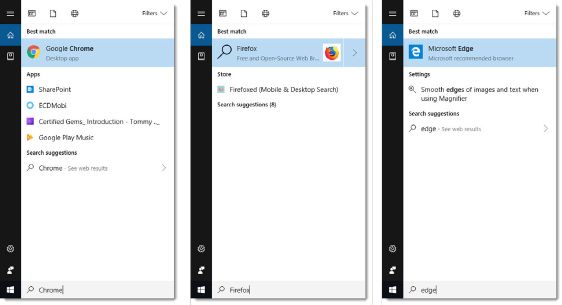
You will learn more about how to use the browser later in this chapter.
To browse to a website, you must know its unique web address, such as www.instagram.com for the Instagram website. Once you know the address, you can enter it into the address bar at the top of the browser.
 Guided Activity 11.2
Guided Activity 11.2
Do the following activity in the class under the guidance of your teacher.

As soon as you press Enter, the web page should begin to load.
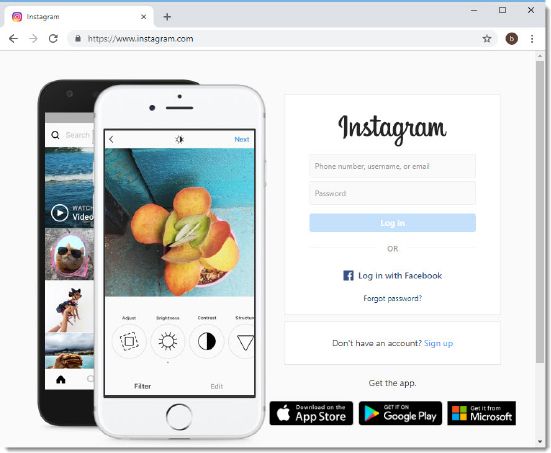
You can now browse the website by clicking on buttons and links, or following the instructions on the page.
WHAT IS THE DIFFERENCE BETWEEN A WEB PAGE AND A WEBSITE?
A web page refers to the text, images, or graphics displayed in a web browser. A web page is generally a single page of content on a website. You can access a web page by entering the URL into the address bar of a web browser.
A website is a collection of web pages that are usually linked by hyperlinks. For example, if you go to the Sunday Times website, it consists of many web pages. On each page, you will find various articles, columns and content that have been grouped into different categories.
To help you understand the difference between web pages and websites better, look at the example on the following page.
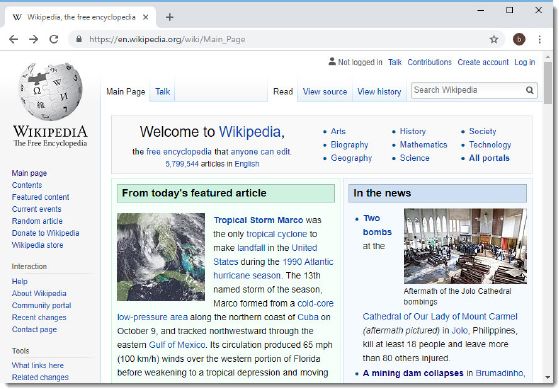

Something to know
If you are still a little bit confused about websites, think of it as a book with many pages.
There are many websites on the WWW; from how to remove a carpet stain, to the latest news on what is happening in the world. However, for the purpose of this book, we will focus on the following types of websites and their purpose.
Table 11.1: Types of websites
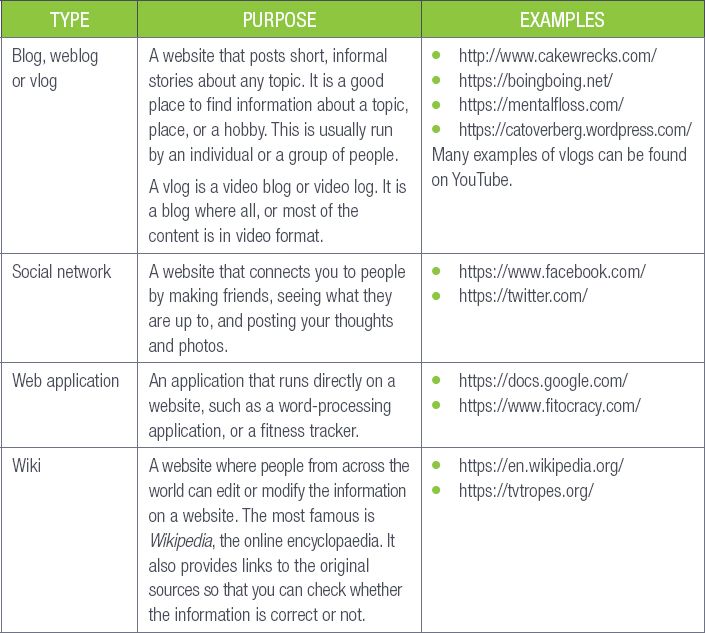

Different types of websites
Make a screen capture video with text and voice-overs, explaining the different types of websites. For each type of website, you can quickly explain what the purpose of that type of website is, and then show an example that meets that purpose.
URLS, URL SHORTENER AND THE ADDRESS BAR
Each web page on the internet has its very own unique address called a URL, which tells the internet exactly what page you want to see on a website. Think of a URL as a street address that tells the web browser where to go on the internet.
When you type a URL into the address bar of the web browser and press Enter, the browser will take you to that specific page. For example, in the figure below, we typed www.bbc.com in the address bar (highlighted in green), which will then load the BBC web page.

In the following example, you will learn more about URLs. Each segment in a URL is a part that makes up the web address.
The domain name is the most important part of an internet address. This could be a word or a phrase that an internet site has identified as the name of the website. People use it to find information on the internet, for example businesses use it to get people to visit their websites.
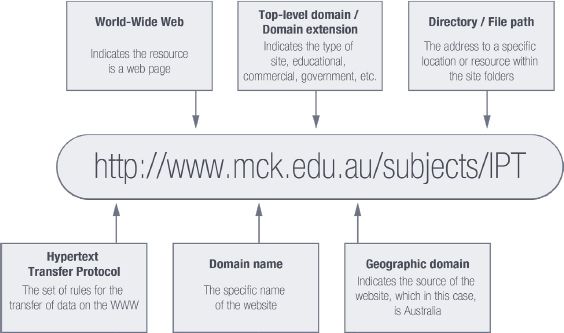

UNDERSTANDING URLS
Watch this video to understand the different parts of the URL:

https://www.youtube.com/watch?time_continue=14&v=5Jr-_Za5yQM
The tables on the following page show the different codes you could come across indicating an organisation type and the country of origin.
URL SHORTENERS
A URL shortener is an online application that converts a normal URL into a much shorter format. The user has to copy the website address into the URL shortener application and the tool will convert the address to a much shorter one.
 Guided Activity 11.3
Guided Activity 11.3
Do the following activity in the class under the guidance of your teacher.
1.Open the website: https://bit.do/.
2.Copy then paste the following address to shorten it: https://www.blog.google/products/maps/wheres-waldo-find-him-google-maps/
3.Click on “Shorten”.
4.What were the results?
Something like this – http://bit.do/eCuFC?
Each time you do this, a different URL is generated.
Table 11.2: Codes showing the different types of organisations
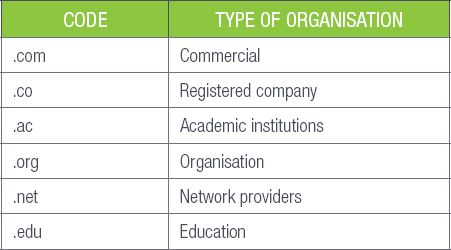
Table 11.3: Examples of country codes found in URLs
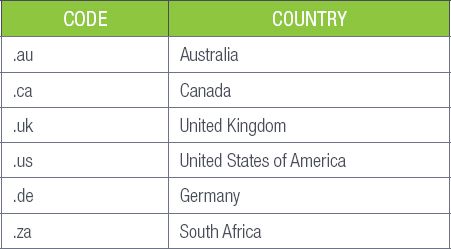
LINKS
When you see a word or phrase on a web page that is blue or underlined in blue, it is usually a hyperlink or link in short. Links are used to navigate the Web. When you click on a link, it will take you to a different web page. Also, sometimes when clicking on a link, the mouse cursor will change to a hand icon before you open the link.
In this example, we have opened a Wikipedia web page and have clicked on the Gauteng link to learn more about it.
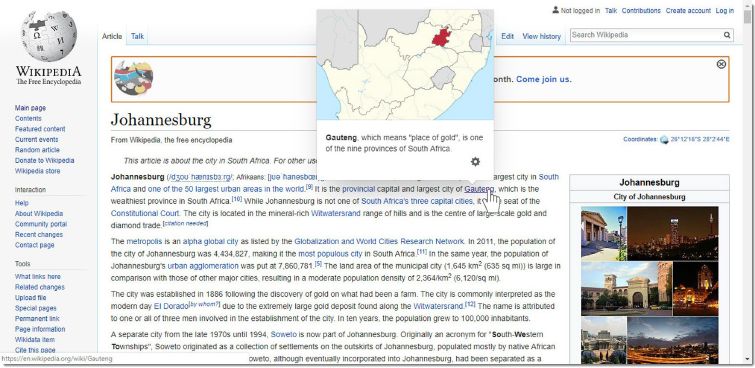
Clicking on the Gauteng link will take you to the following web page:
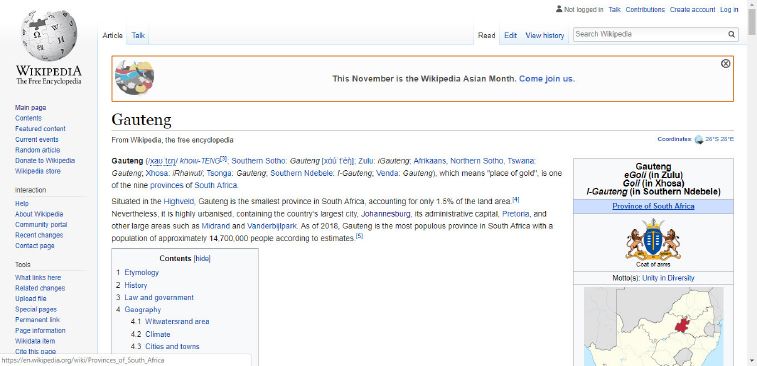
Each of the blue-coloured words in the text are hyperlinks to other web pages.
 Guided Activity 11.4
Guided Activity 11.4
Do the following activity in the class under the guidance of your teacher.
Many websites use images as links. After clicking on the image, it will take you to a new page. In the example below, if we click on the image, it will open a page with more information about it.

Take note that links do not always go to other websites. Links can also allow you to download a file, such as a music file, software file and so on. When you click on a link like this, it will download the file to your device. In the example below, an installation file for a new application can be downloaded.
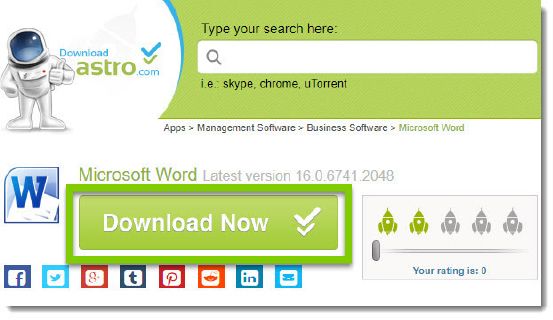
As you have learned, links do not all look the same. Links can have the following different forms:
- Text that is blue and underlined
- Images, such as photos
- Tabs on a web page
- Text that is not underlined, but bolded and appears in another colour
Links play a very important role when using the Web. It allows you to access different web pages, navigate between these pages and download files.
NAVIGATION BUTTONS
Navigation buttons are found on the web browser and allow you to do many things. The arrow buttons, which are called the back and forward buttons, let you go to the websites that you have recently visited. If you click and hold on one of the buttons, you can view the recent browsing history.
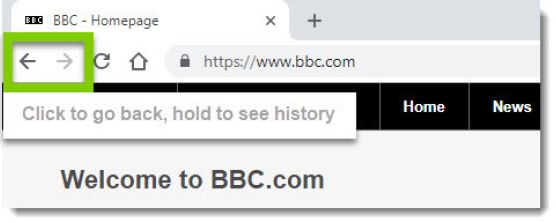
The Refresh button will reload the current web page that you are on. If a website stops working, you can just click on the Refresh button.
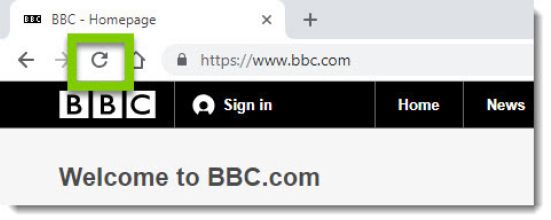
TABBED BROWSING
Many web browsers let you open links in a new tab, which is great because you can open as many links as you need and they will all stay in the same browser window. This prevents separate browser windows from being open on the computer screen.
 Guided Activity 11.5
Guided Activity 11.5
Do the following activity in the class under the guidance of your teacher.
To open a new tab, you can do the following:
1.Right click on the link and select Open link in new tab. Keep in mind that the wording might differ from browser to browser.

2.To switch tabs, click on any tab that is not selected.

3.The web page will then open.

4.To close a tab, click on the X.

5.To create a new blank tab, click on the button found on the right of the open tabs.

ADVANTAGES OF TABBED BROWSING
Some of the advantages of using tabbed browsing, include the following:
- Allows the user to view many web pages at once.
- If users come across a link in the web page they are currently viewing, they can click on the click and a new web page will open in another tab without closing the current web page.
- Allows the user to move between web pages without actually closing any web pages.

Take note
You can use the following useful hotkeys when browsing. Open the web browser and try doing the following using the keyboard:
- Open a tab: Ctrl+T
- Switch between tabs: Ctrl+Tab
- Close a tab: Ctrl+W
 Activity 11.1
Activity 11.1
1.Briefly explain the difference between a website and a web page.
2.Complete the crossword puzzle below by answering the questions that follow:
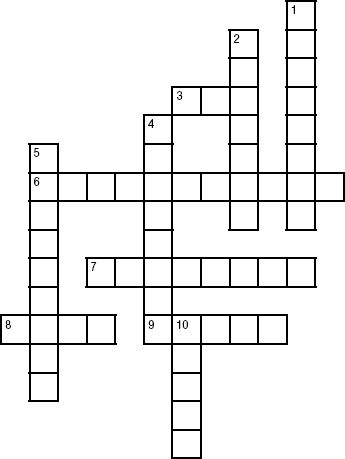
| Down: | Across: |
|---|---|
|
1. A social network website 2. A page made up of text, pictures, audio clips, video clips and animations 4. A website about a single person 5. An example of a news website 10. Brings several types of websites together |
3. When you open a link, it opens in a new _____ 6. A website you can check load-shedding schedules 7. A website that posts short and informal stories 8. A website that collaborators can edit and modify 9. An example of an educational website |
UNIT
11.3 Search engines
In the world we live in today, more and more things are being done online. You need basic computer skills to do research, be social and do many other things on the internet. The ability to search for information on the internet is an important skill to have and by improving this skill, you can find what you are searching for without going through many irrelevant websites.
Since there are billions of websites on the Web, there is a lot of information available. Search engines make access to this information much easier. We will look at the basics of using a search engine and some basic techniques on how to get more useful search results.
SEARCHING FOR INFORMATION
Browsing to the correct website usually only works well when you know the address of the website, or if you need to visit a specific website. However, it is not practical to keep a list of web addresses on you all the time. You might be looking for something specific on the internet, shopping for something new but need to compare prices, or you might just be looking for new interesting websites. For that, you need a search engine to find the information you are looking for.
Three popular search engines are:
1.Google (www.google.com)
2.Microsoft Bing (www.bing.com)
3.Yahoo (www.yahoo.com)
Of the three search engines, Google is the most powerful and easy-to-use search engine.
BASIC BROWSING AND SEARCHING TECHNIQUES
In the following activity, we will search for “grey matter”.
 Guided Activity 11.6
Guided Activity 11.6
Do the following activity in the class under the guidance of your teacher.
To search for something on the internet, you can do the following:
1.Open the web browser and navigate to a search engine. Most web browsers generally allow you to search directly from the address bar. However, some browsers might actually have a separate search bar next to the address bar.
2.Type in one or more keywords (this is also known as the search term).
3.Press Enter on the keyboard.
4.After you have pressed Enter, you will see a list of all the relevant websites that match the search words. If a site looks interesting or looks like what you are looking for, click on the link to open it.

5.Skim through it.

6.If it is not exactly what you are looking for, return to the results and look at other websites.

BASIC SEARCH STRATEGIES
Have a look at this video to get a better idea of search strategies:

REFINING YOUR SEARCH
If you still have problems finding the exact website, you can use the following special characters to help refine your search:
- To exclude a word from the search, type in a hyphen (-) at the beginning of the word. For example, if you want to find grey matter results without mention of the movie with the same name, you could search for grey matter – movie.
- At the same time, if you use a (+) before the beginning of the word or phrase, the search results will show results with just the movie mentioned e.g. grey matter + movie.
- You can also search for the exact words or phrases, which can give you much better results. To do this, use quotation marks (“ ’’) before and after the search words. For example, if you search for “grey matter songs”, the search results will only have songs about grey matter.
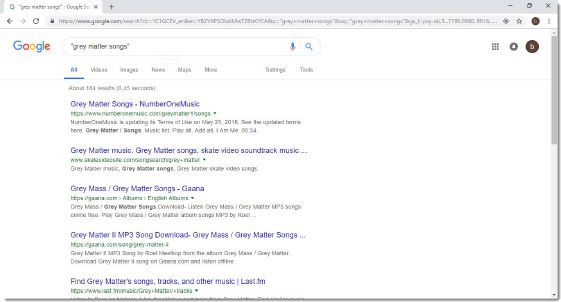
The best results are usually shown on the top page, with the least popular or visited results appearing on the second and third search pages. Since the first search results are usually the best, if you do not find what you are looking for on the first page or two of the results, you should try a different search phrase, or try to use an advanced search technique.
SEARCH TECHNIQUES
The following table highlights a few of the most useful search techniques.
Table 11.4: Search techniques

These techniques can be very useful. However, because search engines have become extremely efficient, you can even find information without using these “special” techniques.
 Guided Activity 11.7
Guided Activity 11.7
Using the information that you just learned, do the following activity during class. Your teacher will guide you through this activity.
1.Open a web browser.
2.Go to the Wikipedia website by typing in its URL: https://www.wikipedia.org/.
3.Click on the English tag.
4.Search for Bafana Bafana.
5.Click on the hyperlink Nickname. What does the double use of the name Bafana Bafana mean?
6.Open a new tab.
7.Type in South African rugby.
8.Click on News
9.Click on Rugby: South African schools with the most Springboks. According to this news article, which school has the most Springboks? How many does it have?
10.Right click on the tag Golden Lions at the bottom of the page.
11.Click Open link in new tab. What does the heading say about the Super Rugby final?
12.Open a new tab.
13.Search for Sunspots without the inclusion of climate.
14.To what do the search results you found on the first page refer?
15.Search for Sunspots with the inclusion of climate.
16.What do you find in the search results? List the names of the first three websites.
17.Do you see any reference to sunspots on the skin? Why or why not?
18.Close all the websites by clicking on the X of each tag.
UNIT
11.4 Downloads and uploads
By now, you might have come across the terms downloading and uploading. Downloading is when the computer or smart device receives a file or data from the internet. Uploading, on the other hand, is when the computer or smart device sends a file or data to somewhere on the internet.
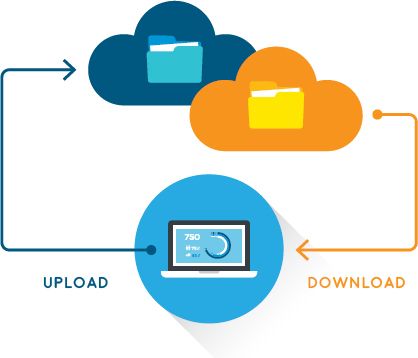
You have probably, at some point, downloaded or uploaded a file or data from the internet. Do you remember downloading a music file or posting (uploading) a photo on your Facebook wall or Instagram?
DOWNLOADING
To be able to download something from the internet, it is an important skill to learn as you will use it throughout your lifetime to download software programs, music, photos, documents, videos, etc.
To take you through a download process, you can look at the following example of downloading a video-player software program.
 Guided Activity 11.8
Guided Activity 11.8
Do the following activity in the class under the guidance of your teacher.
To download VLC, you can do the following:
1.Use the web browser to go to the website for VLC: http://www.videolan.org/.
2.Once the website has loaded, find and click on the Download VLC button. This will download the approximately 40 Mb-VLC installer onto the computer.
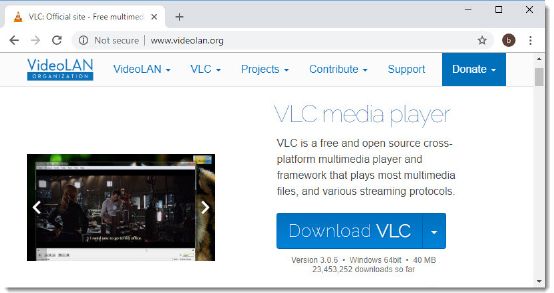
3.When the download has completed, the file will be saved on the computer, or it will open with the program that you selected.
4.If you have a problem finding the download, you can always do the following: Click on the three vertical dots found on the top right-hand side of the screen and choose Downloads from the drop-down menu. You will be able to see all the files that you downloaded and from that, you can choose the file you need.
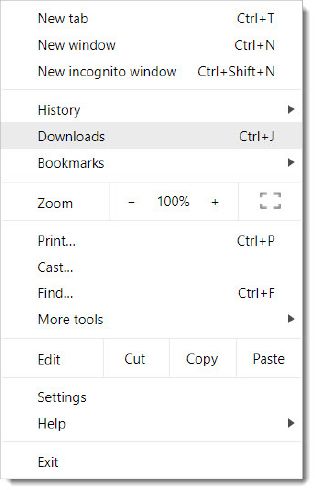

Something to know
Some browsers or even files do not have the “automatic” download process when you click the link to the file. In such a case, you will have to right click the link and choose the Save link as option, and then choose a location to which you can download the file.
 Guided Activity 11.9
Guided Activity 11.9
Do the following activity in the class under the guidance of your teacher.
1.Open the web browser.
2.Go to Google web page.
3.Google the following: Types of input devices “doc”.
4.From the search results, browse for the website that best describes input devices.
5.Click on the website name.
6.Follow the instructions to download the document.
7.Open the document in Word.
8.Save the document as a PDF and call it: Uploadeddoc.
UPLOADING
You can use the upload function to send emails, post photos on a social media site, upload files to Google Drive, etc.
If a site enables uploads, it will have an upload option to help perform the upload or file transfer. Every site has a different uploading process. A dialogue box opens after you click on the Upload button. For example, Facebook has an icon that is an image. This is Facebook’s Upload button for an image, starting the upload process. You can upload an image or file to a website that allows it.
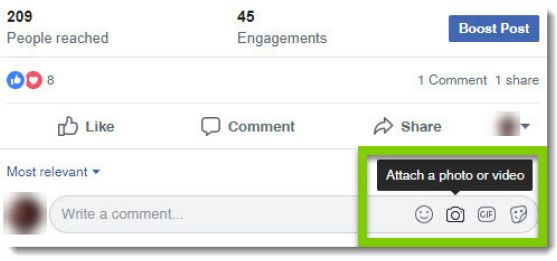
After clicking on this button, the dialogue box will appear, prompting you to select a file. Navigate to the location to where the file is stored and click on the Open button. A progress bar will track the upload process.
Some websites have a drag-and-drop interface. For example, when logged into Google Drive, you can upload files or even zipped folders from the computer to the browser window by dragging and dropping the file.
Let’s look at the following example of Ted Talks, an organisation that uploads videos from expert speakers about a variety of topics, such as education and business.
 Guided Activity 11.10
Guided Activity 11.10
Do the following activity in the class under the guidance of your teacher.
To upload a video on a website e.g. Ted Talks, you can do the following:
1.First of all, the user needs to log into the TED Media Uploader. If this is your first time, you can request the uploader here.
2.Once you have logged in, select the event category of the video that the user wants to upload.
3.Click on “Upload Video” to upload a new video.
4.Follow the instructions, for example the type of file you are loading, as well as other personal details.
5.Include a video description.
6.Click “Upload”.
 Activity 11.2
Activity 11.2
1.Which one of the following is NOT a good technique used to refine an Internet/web search?
A.Using one word only
B.Specifying the domain
C.Using quotation marks
D.Using operators such as “and” and “not”
2.Define the following terms:
a.Search engine
b.Web application
3.Complete the table below by indicating in Column B whether the action in Column A is downloading or uploading. Only write the number and the answer down.

REVISION ACTIVITY
1.Write down the letter that matches the correct answer: The letters “http” stand for:
A.Hypertype transport protocol
B.Hypertext transfer protocol
C.Hypertext transfer process
D.Hypertype transfer protocol (1)
2.Which of the following web browsers is installed with Windows 10?
A.Google Chrome
B.Mozilla Firefox
C.Edge
D.Safari (1)
3.Your friend thinks that the internet and the WWW are the same thing. Explain to her what the difference is between them. (4)
4.Study the screenshot below that shows the home page of a website and use it to answer the questions that follow:

a.What is the URL of the web page? (1)
b.What is the domain name of this web page? (1)
c.What is the geographical domain of this web page? Which country is this? (2)
d.Name two other web pages that are part of this website. (2)
e.Why is the word “Facebook” in blue and underlined? (1)
5.For each of the scenarios below, write down the type of website. Choose your answer from blog, weblog, social network, wiki or web application.
a.Zanele has a website where she keeps a journal of the exotic foods she enjoys (1)
b.Rebogile has created a website that people can use to create a monthly budget and to track their expenses (1)
c.Julia, a Life Sciences teacher, has a website where her learners can go to find study tips, as well as answers to recent examination questions (1)
6.The screenshot below shows part of the Google Chrome browser. Use it to answer the questions that follow:

a.The Google Chrome browser uses tabbed browsing. Mention two advantages of using tabbed browsing. (2)
b.Which tab is currently active? Explain how you arrived at your answer. (2)
c.What is the function of the + button after the second tab? (1)
d.What is the meaning of the closed padlock in front of the URL in the address bar? (1)
e.Give the name of another browser other than Google Chrome. (1)
7.Francois wants to take some friends that are visiting from Europe to the top of Table Mountain in Cape Town. He plans to use the cableway to travel to the top of the mountain. Francois uses the Google search engine and types in “Cape Town” in the search box. He gets about 650 000 000 results.
a.How could Francois change his search phrase to only get results for the Table Mountain cableway? (2)
b.Name another search engine that Francois could use, other than Google. (1)
8.Explain the difference between downloading and uploading when using the internet. Give an example of each. (4)
TOTAL: [30]
AT THE END OF THE CHAPTER
Use the checklist to make sure that you worked through the following and that you understand it.
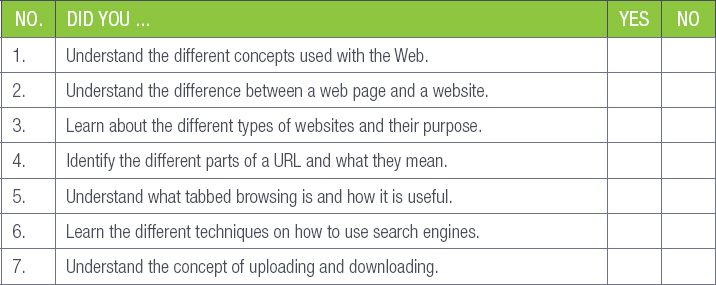
|
Previous
Chapter 10: Types of networks: PAN/HAN
|
Table of Contents |
Next
Chapter 12: Internet communication
|

